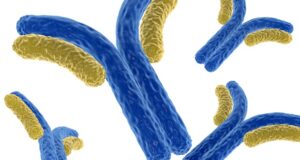
Researchers have developed a new software tool that provides unprecedented capabilities to see inside 3D images. Its interactive, dynamic cutaway views allowed them to analyze never-before-seen dynamics of embryonic mouse heart development using optical coherence tomography (OCT) images.
“An improved understanding of heart development could help inform new clinical strategies in managing congenital heart diseases, which are the most common type of birth defects,” said research team leader Shang Wang from Stevens Institute of Technology. “Such insights are also foundational for designing innovative strategies of regenerating heart tissue after damage from a heart attack, improving the cardiac function.”
In the Optica Publishing Group journal Biomedical Optics Express, the researchers describe their new open-source software tool called clipping spline. It is a user-friendly tool to visualize complex structures, such as a tubular structure that curves in 3D, in a single cutaway view.
“3D imaging already plays an essential role in biomedicine, but there’s still more we can learn if we consider the temporal aspect – that is, as a 4D image,” said research team member Andre Faubert, a research associate in Shang Wang’s laboratory. “Although we demonstrated the clipping spline with 4D OCT data, it can be used for volumetric images from any imaging modality, for both biological research and clinical medicine applications.”
Visualizing complex 3D structures
The researchers developed the clipping spline when they were working with 4D OCT images to study embryonic mouse heart development during the cardiac looping stage. At this stage, the heart tube bends and twists, forming a convoluted shape with dramatic changes in structures and blood flow patterns.
“The looping stage is a vital stage of heart development and is responsible for a range of congenital defects,” said Wang. “Little is known about the dynamics and processes that take place during this stage; although they can be imaged, there were only limited tools available to visualize and analyze them.”
To fill this technology gap, the researchers developed a new software tool that carries out volume clipping, a computational way to remove certain voxels in a 3D image to expose the structure of interest inside. Volume clipping is the software equivalent of using a knife to cut a solid object to view what is inside. However, carrying out volume clipping for complex structures in a single cutaway view is challenging and requires carefully defining the boundary between the voxels to keep and those to remove.
Currently, the most common approach to volume clipping is to use clipping planes, which operate like a straight knife cut. However, their simple planar geometry prevents the creation of concave surfaces, limiting their ability to fully display intricate structures in a single view. To overcome these limitations, the researchers leveraged a type of smooth surface known as the thin plate spline (TPS) and applied it to volume clipping for the first time.
The TPS is a 3D surface defined by a set of control points in the way that it intersects all the control points with minimal curvature. This intuitive and adjustable surface allows users to move, add or delete control points to refine its shape and position interactively, allowing it to be adapted to complex structures. Additionally, because the TPS is defined using mathematical parameters, it is possible to carry out algorithmic transitions, such as moving, splitting or merging control points. This facilitates smooth 4D volume clipping and dynamic visualizations such as flythroughs.
The researchers also optimized the computational pipeline to make the clipping spline an efficient, real-time tool for generating and adjusting cutaway views into a volume.
Watching the heart develop
The researchers used the clipping spline to visualize and analyze embryonic mouse heart development with OCT data, for example, tracking myocardial dynamics over 12.8 hours of development across 712 time points.
The clipping spline allowed them to see multiple parts of the convoluted heart tube at the same time in a single view, providing a larger view of the dynamics than was available previously. This gave them a better picture of how the biomechanics of the embryonic heart are involved in generating specific blood flow patterns. They also used the clipping spline to uncover how the inflow tracts of the early heart merge to form the sinus venosus, a structure that directs blood into the developing heart.
“It is simply amazing to see these developmental processes taking place, and it inspires new thoughts and hypotheses that could lead to significant insights into how the mammalian heart develops,” said Wang. “Studying and understanding biological development is not only essential for improving the clinical management of congenital diseases but is also foundational for many other biomedical areas, such as cancer and regenerative medicine.”
The researchers say that the clipping spline is ready to be widely used by the biomedical imaging community. They are now focused on developing advanced image processing methods using the clipping spline and applying the clipping spline to further investigate the dynamics and processes of embryonic heart development.




